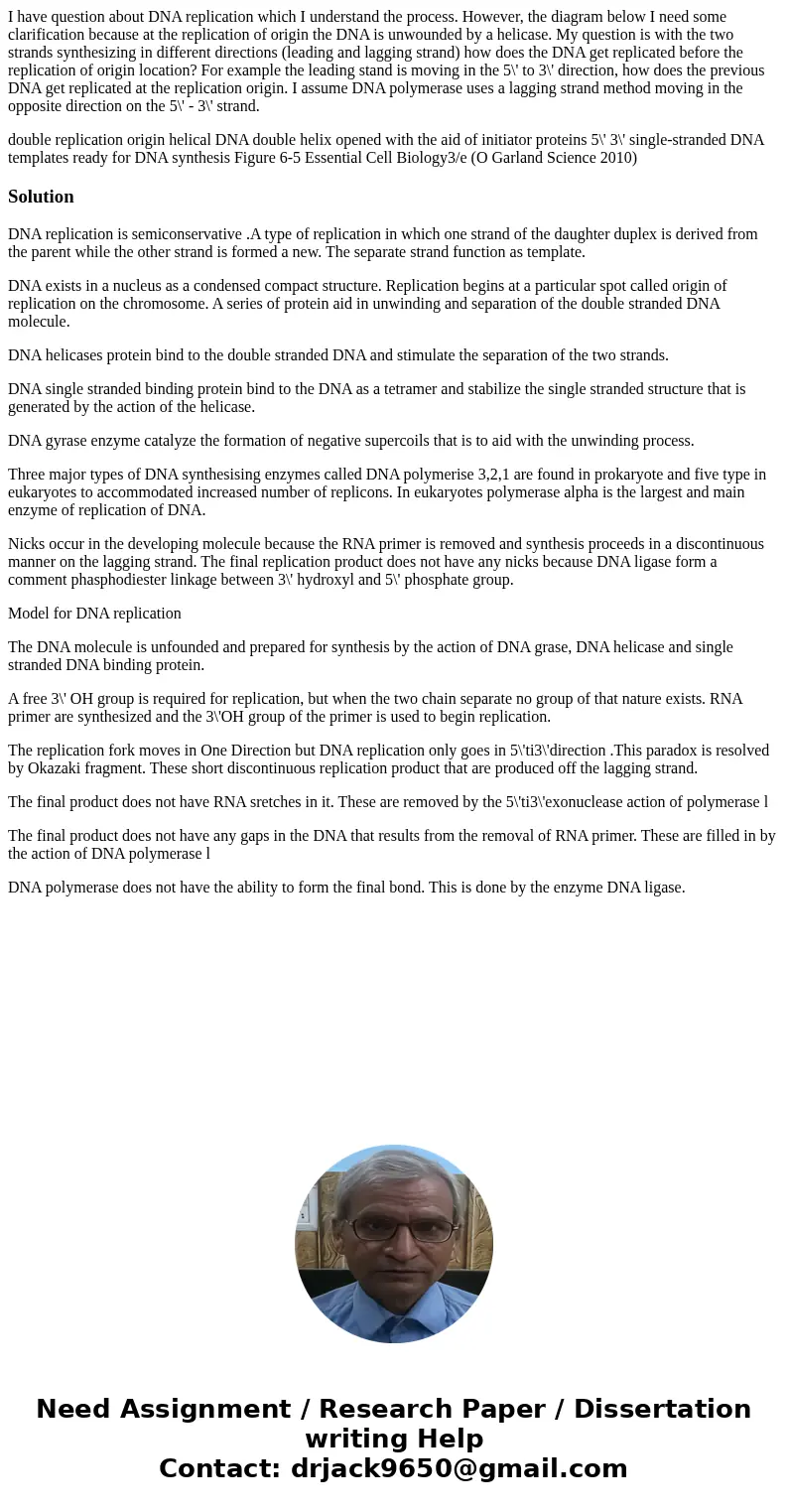I have question about DNA replication which I understand the
I have question about DNA replication which I understand the process. However, the diagram below I need some clarification because at the replication of origin the DNA is unwounded by a helicase. My question is with the two strands synthesizing in different directions (leading and lagging strand) how does the DNA get replicated before the replication of origin location? For example the leading stand is moving in the 5\' to 3\' direction, how does the previous DNA get replicated at the replication origin. I assume DNA polymerase uses a lagging strand method moving in the opposite direction on the 5\' - 3\' strand.
double replication origin helical DNA double helix opened with the aid of initiator proteins 5\' 3\' single-stranded DNA templates ready for DNA synthesis Figure 6-5 Essential Cell Biology3/e (O Garland Science 2010)Solution
DNA replication is semiconservative .A type of replication in which one strand of the daughter duplex is derived from the parent while the other strand is formed a new. The separate strand function as template.
DNA exists in a nucleus as a condensed compact structure. Replication begins at a particular spot called origin of replication on the chromosome. A series of protein aid in unwinding and separation of the double stranded DNA molecule.
DNA helicases protein bind to the double stranded DNA and stimulate the separation of the two strands.
DNA single stranded binding protein bind to the DNA as a tetramer and stabilize the single stranded structure that is generated by the action of the helicase.
DNA gyrase enzyme catalyze the formation of negative supercoils that is to aid with the unwinding process.
Three major types of DNA synthesising enzymes called DNA polymerise 3,2,1 are found in prokaryote and five type in eukaryotes to accommodated increased number of replicons. In eukaryotes polymerase alpha is the largest and main enzyme of replication of DNA.
Nicks occur in the developing molecule because the RNA primer is removed and synthesis proceeds in a discontinuous manner on the lagging strand. The final replication product does not have any nicks because DNA ligase form a comment phasphodiester linkage between 3\' hydroxyl and 5\' phosphate group.
Model for DNA replication
The DNA molecule is unfounded and prepared for synthesis by the action of DNA grase, DNA helicase and single stranded DNA binding protein.
A free 3\' OH group is required for replication, but when the two chain separate no group of that nature exists. RNA primer are synthesized and the 3\'OH group of the primer is used to begin replication.
The replication fork moves in One Direction but DNA replication only goes in 5\'ti3\'direction .This paradox is resolved by Okazaki fragment. These short discontinuous replication product that are produced off the lagging strand.
The final product does not have RNA sretches in it. These are removed by the 5\'ti3\'exonuclease action of polymerase l
The final product does not have any gaps in the DNA that results from the removal of RNA primer. These are filled in by the action of DNA polymerase l
DNA polymerase does not have the ability to form the final bond. This is done by the enzyme DNA ligase.

 Homework Sourse
Homework Sourse